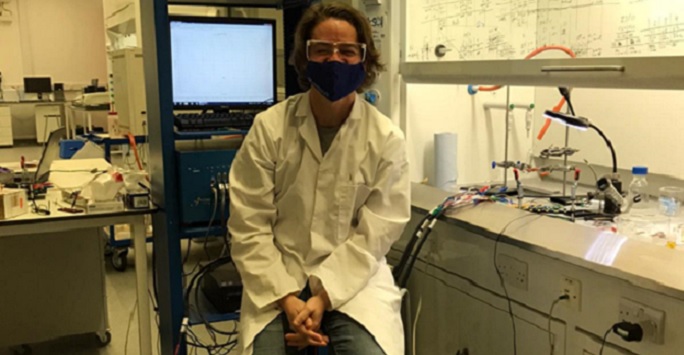Returning to work (after lockdown 1)
Posted on: 23 April 2021 in Researchers

Dr Filipe Braga Nogueira, Postdoc, Department of Chemistry, shares his experience of returning to work after lockdown.
As the pandemic developed this year, people were forced to adapt in so many different ways and everyone’s work routine had to change. This could not have been different for research staff. There are various types of Post-Doctoral Research Associates at the University and I imagine that for some people working from home was quite welcomed. For laboratory-based scientists, however, working from home was never really a possibility since we should not be taking out experiments home. That’s why I was very happy when the return to work was allowed by central government.
Overall, my return to work was very positive, especially due to being involved in the preparations to make laboratories COVID secure from the very beginning. At the Stephenson Institute for Renewable Energy, where I work as a PDRA, a range of measures were put in place to ensure social distance in the labs. This involved staggered shifts, one-way systems and reducing the number of people working at the same shift. The laboratories were divided in areas in which only one researcher was allowed at the same time and a booking system was put in place. To make that possible, these areas had to be made self-sufficient, to avoid people crossing over to use an equipment or to grab some glassware they forgot. This involved a great deal of reorganising lab spaces, such as moving chemical cupboards, ovens and balances to each specific area. For that, PDRAs could offer invaluable input, being directly involved in the daily functioning of the lab, to identify which equipment had to be moved to make the working areas self-sufficient. The final reopening plan document had contributions from different post docs from all the laboratories within the institute. It is my personal opinion that when you are taken along the way and you understand why the decisions are being made you are more likely to adhere to the safety restrictions.
Just as important as generating data is analysing the data and, due to Covid restrictions, the office spaces had to be closed after lockdown ended to minimise the risk of infection. That meant that all the data processing, that used to happen in the office during the work day, was taken home. And for that, the financial support to adapt a home office was also much appreciated. That included office chairs, webcams, microphones and other small office items. This was extremely helpful if you are a PDRA living in a small city centre accommodation. One good outcome of this change was that now researchers had to plan ahead much more what they intended to do in the laboratory, since we couldn’t just read papers at the office. In the end, this will certainly increase productivity.
This case study is being written about the return to work after the first lockdown, one week before the end of the second lockdown. Since then, several changes and updates were made to COVID safety plan in our institute, such as allowing more than one person in the subdivided laboratory areas to permit a training session for example. There will probably be more changes to come, as the pandemic hopefully approaches an end, but I felt grateful to have been part of the decision-making process and, more important, I felt safe returning to work.
Key takeaways:
- Important to be part of the decision-making process with regards to the working environment.
- The need to plan ahead with regards to lab and office work is even more important and will aid productivity.
Keywords: Working environment, COVID-19, Research Staff Association.